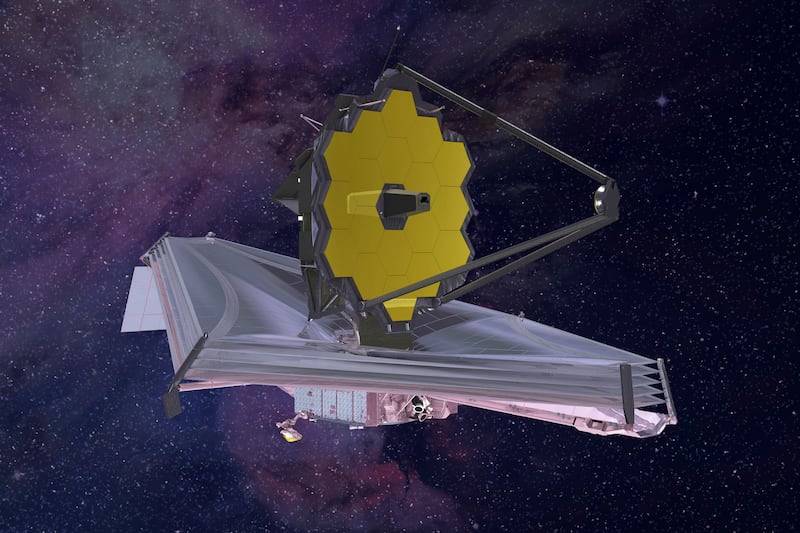The James Webb Space Telescope that just provided the world with the deepest-ever view of the universe has been permanently damaged by asteroid attacks.
Driving the news: According to Live Science, NASA’s James Webb Space Telescope has been pelted by at least 19 small space rocks since it launched in December.
- One larger rock has left irreversible damage on one of the telescope’s 18 gold-plated mirrors.
What they’re saying: NASA released the news about the meteoroid strike last month, saying it had built the telescope to withstand the toils of space and knew there would be occasional micrometeoroid strikes.
- Lee Feinberg, Webb optical telescope element manager at NASA Goddard, explained the team knew a strike was bound to happen at some point, saying, “With Webb’s mirrors exposed to space, we expected that occasional micrometeoroid impacts would gracefully degrade telescope performance over time.”
- However, “the debris was more sizeable than pre-launch modeling had accounted for” and scientists are unsure what long-term effects will come from the damage, Space reported.
- “Each micrometeoroid caused degradation in the wavefront of the impacted mirror segment, as measured during regular wavefront sensing,” said NASA, per Sky News.
- NASA called the incident an “unavoidable chance event” and says they will use it as an opportunity to increase their “knowledge of the solar system dust particle environment.”
Details: According to Live Science, “The U.S. Space Surveillance Network keeps track of more than 23,000 pieces of orbital debris measuring larger than the size of a softball,” but millions of smaller chunks go through space undetected.
- The first image from JWST was unveiled last week at a White House event with President Joe Biden and NASA officials, providing never before seen views of the galaxy, the Deseret News reported.

